- Pipe Making Machinery[6]
- Other Plastic Processing Machinery[6]
- Plastic Extruders[6]
- Other Construction Material Making Machinery[6]
- Other Machinery[6]
- Water Treatment[6]
- Sewer[1]
- Other Metal Processing Machinery[1]
- Moulds[6]
- Composite Pipes[6]
- Other Fiberglass Products[6]
- Other Construction & Real Estate[4]
- Waste Management[2]
- Environment Projects[2]
- Other Environmental Products[2]
- Pressure Vessels[6]
- Motor Controller[1]
- Metal Building Materials[2]
- HVAC Systems & Parts[5]
- Industrial Air Conditioners[2]
- Refrigeration & Heat Exchange Parts[2]
- Other Chemical Equipment[2]
- Alternative Energy Generators[1]
- Solar Cells[1]
- Doors[1]
- Other Plastic Products[1]
- Steel Rebars[1]
- Abrasive Tools[4]
- Power Distribution Equipment[6]
- Telecommunication Tower[6]
- Other Electrical Equipment[6]
- Steel Structures[5]
- Cleaning Cloths[6]
- Contact Person : Mr. JI Zhiyong
- Company Name : Beijing ZLRC Environmental Protection Equipment Co., Ltd.
- Tel : 86-010-87587386
- Fax : 86-010-67536885
- Address : Beijing,Beijing,1-1018, City Avenue,Fengtai District , Beijing, China
- Country/Region : China
- Zip : 10068
Related Product Searches:grp rock bolt machine,High Quality grp rock bolt machine,grp rock bolt machine ZLRC-2
offers a full line of Fusion Bond Epoxy Application Equipment including shot blasting machine,electrostatic spray systems,dust collectors,vacuum loading systems, powder shrouds, fire suppression equipment, shaker separators, furnaces, air dryers, and cooling towers.
Advantage and Statement
• Excellent Corrosion Protection.
• More than 10 Years of Experience.
• Extended Service Life.
• Cost Effective Life-Cycle.
• Nationwide Availability.
• Sustainable.
• Coated with epoxy resin
• Trustworthy brand
• ASTM-A615;A775
• Dia:6-40mm
Fusion Bonded Epoxy Coated Rebar Manufacturing Process
The application of fusion-bonded epoxy coating to steel reinforcement involves four major process steps:
1. Surface Preparation
Reinforcing bars are blast-cleaned to a near white metal finish using abrasive grit. This cleans the steel of contaminants, mill scale and rust. It also roughens the surface to give it a textured anchor profile. During this process, salt contamination is also removed.
2. Heating
Bars are heated to approximately 450°F, typically using electrical induction heaters, although gas-fired heating is used in some cases.
3. Powder Application
The heated steel is passed through a powder-spray booth where the dry epoxy powder is emitted from a number of spray nozzles. As the powder leaves the spray gun, an electrical charge is imparted to the particles. These electrically charged particles are attracted to the grounded-steel surface providing even coating coverage. When the dry powder hits the hot steel, it melts and flows into the anchor profile (i.e., the microscopic peaks and the valleys on the surface) and conforms to the ribs and deformations of the bar. The heat also initiates a chemical reaction that causes the powder molecules to form complex cross-linked polymers which give the material its beneficial properties.
4. Cure
Following powder application, the coating is allowed to cure for a short period (approximately 30 seconds) during which time it hardens to a solid. In some plants, the curing is often followed by an air or water quench that quickly reduces the bar temperature to facilitate handling.








